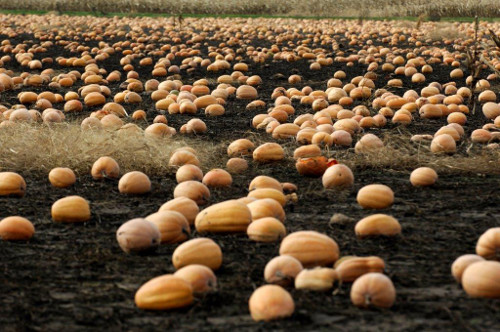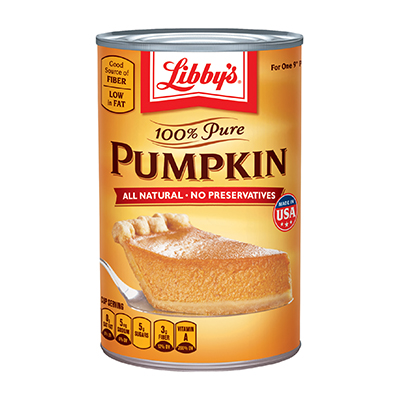What’s Up With That Food: Canned Pumpkin
Paste uncovers the background of foods you've always wondered about
The official season of Pumpkin Spice Latte (#PSL for those in the know) may be well underway, but just in time for Halloween, Thanksgiving and all fall holidays, we bring you the straight scoop behind canned pumpkin, an undervalued convenience food that’s rich in nutrients and free of preservatives. One company in the U.S. makes the majority of it in the United States and the rest—well, it isn’t necessarily always pumpkin, depending on the brand.
Type of food: Squash
Name: The name stems from the Greek word pepon (“large melon”), which morphed over time into the word pumpkin. In terms of what you’re most likely to find in a can, Cucurbita moschata is the species name, and that includes numerous cultivars of squash and pumpkin, including butternut squash, neck pumpkin and, most often, Dickinson squash.
Origins: In North America, squash such as pumpkin dates back to Native Americans; winter squash, more broadly, is one of the Three Sisters, along with maize and beans, that are typically planted together because of their complementary growing natures. Pumpkin pie takes its origins from colonists who would slice off the tops and remove the seeds, fill the insides with milk, honey and spices, and then roast them over fire. Add industrialization and bam, you’ve got a uniquely American solution for a beloved pie: canned pumpkin.
Why/how did we start eating it: Libby’s, which is the brand leader when it comes to canned pumpkin in the United States, plants about 5,000 acres of Dickinson squash in the region surrounding Morton, Illinois, which is not far from Peoria. Dickinson is prized for its creamy, vibrant orange flesh and looks more like meatier butternut squash with a slightly whitish cast to the skin; it bears little resemblance to the average field pumpkin of hayrides and jack-o-lanterns. Most of the pumpkins grown in the United States come from within 50 miles of Morton, which unsurprisingly calls itself the “pumpkin capital of the world” and has been holding a festival in celebration of that fact for the past 49 years.
Morton has a long history of pumpkin growing and its first vegetable processing plant opened in 1925. Libby’s acquired Morton’s in 1929 and Nestle bought Libby’s in 1972. It’s not clear exactly when canned pumpkin emerged. “In the early years, Libby’s canned vegetables. You can safely go back 75 years to 1940,” says Roz O’Hearn, corporate and brand affairs director for Nestle. Why 1940? Well, the famed pumpkin pie recipe has been on the can for that long. Any way you scoop it out, that’s a whole lotta pumpkins.

How it’s used: Canned pumpkin goes into pies cookies, cupcakes, quick breads and so forth. But canned pumpkin has savory applications, and many of them shine in soups and chili, but any manner of pasta, whether lasagna, mac and cheese or tossed in with penne and other ingredients, is a foil for pumpkin, too. Personally? Once I open a can and have leftovers in the fridge, I use it whenever I can—a tablespoon or two in a smoothie, a dollop in my son’s oatmeal in the morning, a quarter cup in a waffle or pancake batter. It’s already cooked during the canning process, so you can use it straight up out of the can.
Libby’s is currently using the hashtag #pumpkincan to promote the myriad ways pumpkins can work in foods. For example, you can substitute ¼ cup pumpkin for an egg in many baked goods. You can swap out half the butter in a recipe for brownies and use pumpkin instead. And so on.
